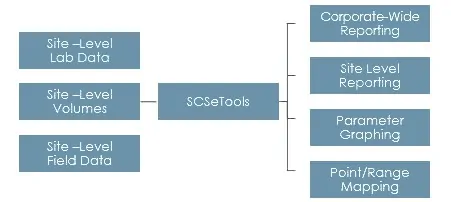


If you desire to facilitate tracking leachate generation and disposal data against budgeted estimates, this application handles the input, analysis, review, and export of leachate information, specifically including liquid levels, volumes, and analytical data for a given data collection point.
Collection points can be sumps, storage tanks, and discharge points, including tracking the rainfall totals, monthly or over any short or long-term period, at a site.
Data analysis can include charting volumes, measuring liquid levels, and reviewing individual data points, which includes analytical data, plus aggregation and review of total volumes for a site. The functionality being added will aggregate volume information from various data collection points and will provide a site-wide volume of both generated and disposed of leachate.
SCS DataServices® users are able to evaluate liquids issues within a LFG wellfield. The module includes the functions to manage the chemistry and quantities of landfill leachate.

Leachate disposal data collected in the field on pre-formatted forms uploads into the application, noting the disposal method. The system performs the following functions:
The resulting generation and disposal trends, especially when compared year-over-year across all disposal methods, produces information critical to determining optimal disposal options and solutions, such as: